Stability and Boundedness of the Solutions of Multi-Parameter Dynamical Systems with Circulatory Forces
Abstract
1. Introduction
2. Formulation of the Problem
3. Main Results: Circulatory System with Three Degrees of Freedom
4. Special Case: Multiple Eigenvalues of Matrix K
5. Nonlinear Systems with Unstable Equilibrium
5.1. Some General Remarks
5.2. A Case Study: The Bounded Solutions of a 2-DoF System with Unstable Origin
6. Concluding Remarks
Author Contributions
Funding
Acknowledgments
Conflicts of Interest
Appendix A
References
- Lamb, J.S.W.; Brands, H. Symmetries and reversing symmetries in kicked systems. In Dynamics, Bifurcation and Symmetry; Springer: Dordrecht, The Netherlands, 1994; pp. 181–193. [Google Scholar]
- Tkhai, V.N. Invariant sets and symmetric periodic orbits of reversible mechanical systems. J. Appl. Math. Mech. 1996, 60, 941–952. [Google Scholar] [CrossRef]
- O’Reilly, O.M.; Malhotra, N.K.; Namachchivaya, N.S. Some aspects of destabilization in reversible dynamical systems with application to follower forces. Nonlinear Dyn. 1996, 10, 63–87. [Google Scholar] [CrossRef]
- Lamb, J.S.W.; Roberts, J.A.G. Time-reversal symmetry in dynamical systems: A survey. Physica D 1998, 112, 1–39. [Google Scholar] [CrossRef]
- Kirillov, O.N. Classical Results and Modern Approaches to Nonconservative Stability. In Dynamic Stability and Bifurcation in Nonconservative Mechanics, CISM Int. Centre for Mech. Sci.; Bigoni, D., Kirillov, O., Eds.; Springer: Berlin/Heidelberg, Germany, 2019; pp. 129–190. [Google Scholar]
- Bolotin, V.V. Nonconservative Problems of the Theory of Elastic Stability; Macmillan: New York, NY, USA, 1963. [Google Scholar]
- Beletsky, V.V. Some Stability Problems in Applied Mechanics. Appl. Math. Comput. 1995, 70, 117–141. [Google Scholar] [CrossRef]
- Fabrikant, A.L.; Stepaniants, Y.A. Propagation of Waves in Shear Flows; World Scientific Series on Nonlinear Science, Series A 18; World Scientific: Singapore, 1998. [Google Scholar]
- Zhuravlev, V.F.; Klimov, D.M. Theory of the Shimmy Phenomenon. Mech. Solids 2010, 45, 324–330. [Google Scholar] [CrossRef]
- Kang, J.; Krousgrill, C.; Sadeghi, F. Dynamic Instability of a Thin Circular Plate with Friction Interface and Its Application to Disc Brake Squeal. J. Sound Vib. 2008, 316, 164–179. [Google Scholar] [CrossRef]
- Kirillov, O.N. Nonconservative Stability Problems of Modern Physics; De Gruyter: Berlin, Germany, 2013. [Google Scholar]
- Hagedorn, P.; Heffel, E.; Lancaster, P.; Muller, P.C.; Kapuria, S. Some recent results on MDGKN-systems. ZAMM 2015, 95, 695–702. [Google Scholar] [CrossRef]
- Jekel, D.; Hagedorn, P. Stability of weakly damped MDGKN-systems: The role of velocity proportional terms. ZAMM 2017, 97, 1128–1135. [Google Scholar] [CrossRef]
- Ziegler, H. Linear Elastic Stability, A Critical Analysis of Methods, Part 1. Z. Angew. Math. Phys. 1953, 4, 89–121. [Google Scholar] [CrossRef]
- Kirillov, O.N.; Seyranian, A.P. Metamorphoses of characteristic curves in circulatory systems. J. Appl. Math. Mech. 2002, 66, 371–385. [Google Scholar] [CrossRef]
- Kirillov, O.N.; Seyranian, A.P. Stabilization and destabilization of a circulatory system by small velocity-dependent forces. J. Sound Vib. 2005, 283, 781–800. [Google Scholar] [CrossRef]
- Krechetnikov, R.; Marsden, J.E. Dissipation Induced Instabilities in Finite Dimensions. Rev. Mod. Phys. 2007, 79, 519–553. [Google Scholar] [CrossRef]
- Sugiyama, Y.; Langthjem, M. Physical mechanism of the destabilizing effect of damping in continuous non-conservative dissipative systems. Int. J. Non-Linear Mech. 2007, 42, 132–145. [Google Scholar] [CrossRef]
- Baikov, A.E.; Krasilnikov, P.S. The Ziegler effect in a non-conservative mechanical system. J. Appl. Math. Mech. 2010, 74, 51–60. [Google Scholar] [CrossRef]
- Seyranian, A.P.; Mailybaev, A.A. Paradox of Nicolai and related effects. ZAMP Z. angew. Math. Phys. 2011, 62, 539–548. [Google Scholar] [CrossRef]
- Luongo, A.; Ferretti, M.; D’Annibale, F. Paradoxes in dynamic stability of mechanical systems: investigating the causes and detecting the nonlinear behaviors. Springerplus 2016, 5, 60. [Google Scholar] [CrossRef]
- Abdullatif, M.; Mukherjee, R.; Hellum, A. Stabilizing and destabilizing effects of damping in non-conservative systems: Some new results. J. Sound Vib. 2017, 413, 1–14. [Google Scholar] [CrossRef]
- Semler, C.; Alighanbari, H.; Paidoussis, M. A physical explanation of the destabilizing effect of damping. J. Appl. Mech. 1998, 65, 642–648. [Google Scholar] [CrossRef]
- Merkin, D.R. Introduction to the Theory of Stability, Texts in Applied Mathematics; Springer: New York, NY, USA, 1997. [Google Scholar]
- Koshlyakov, V.N.; Makarov, V.L. Mechanical systems, equivalent in Lyapunov’s sense to systems not containing non-conservative positional forces. J. Appl. Math. Mech. 2007, 71, 10–19. [Google Scholar] [CrossRef]
- Puzyrev, V.E.; Topchiy, N.V. The estimation of eigenvalues for linear mechanical 2-DOF system. Mech. Rigid Body 2011, 41, 132–140. (In Russian) [Google Scholar]
- Bolotin, V.V. Dynamic instabilities in mechanics of structures. Appl. Mech. Rev. 1999, 52, 1–9. [Google Scholar] [CrossRef]
- Langthjem, M.A.; Sugiyama, Y. Dynamic stability of columns subjected to follower loads: A survey. J. Sound Vib. 2000, 238, 809–851. [Google Scholar] [CrossRef]
- Bulatovic, R.M. On the stability of linear circulatory systems. Z. Angew. Math. Phys. 1999, 50, 669–674. [Google Scholar] [CrossRef]
- Gallina, P. About the stability of non-conservative undamped systems. J. Sound Vib. 2003, 262, 977–988. [Google Scholar] [CrossRef]
- Bulatovic, R.M. A sufficient condition for instability of equilibrium of non-conservative undamped systems. Phys. Lett. 2011, 375, 3826–3828. [Google Scholar] [CrossRef]
- Birtea, P.; Casu, I.; Comanescu, D. Sufficient conditions for instability for circulatory and gyroscopic systems. Physica D 2012, 241, 1655–1659. [Google Scholar] [CrossRef]
- Bulatovic, R.M. A stability criterion for circulatory systems. Acta Mech. 2017, 228, 2713–2718. [Google Scholar] [CrossRef]
- Udwadia, F.E. Stability of Dynamical Systems with Circulatory Forces: Generalization of the Merkin Theorem. AIAA J. 2017, 55, 2853–2858. [Google Scholar] [CrossRef]
- Gantmacher, F.R. The Theory of Matrices; Nauka: Moscow, Russia, 1988. (In Russian) [Google Scholar]
- Meyers, C. Matrix Analysis and Linear Algebra; SIAM Publications: Philadelphia, PA, USA, 2000. [Google Scholar]
- Yang, L. Recent Advances on Determining the Number of Real Roots of Parametric Polynomials. J. Symb. Comp. 1999, 28, 225–242. [Google Scholar] [CrossRef]
- Lobas, L.G.; Kovalchuk, V.V. Stability domains of the vertical equilibrium state of a triple simple pendulum. Int. Appl. Mech. 2008, 44, 1180–1190. [Google Scholar] [CrossRef]
- Puzyrev, V.E. Estimation of solutions of nonautonomous systems. Ukr. Math. J. 1995, 47, 285–292. [Google Scholar] [CrossRef]
- Spagnuolo, M.; Barcz, K.; Pfaff, A.; Dell’Isola, F.; Franciosi, P. Qualitative pivot damage analysis in aluminum printed pantographic sheets: numerics and experiments. Mech. Res. Commun. 2017, 83, 47–52. [Google Scholar] [CrossRef]
- Placidi, L. A variational approach for a nonlinear one-dimensional damage-elasto-plastic second-gradient continuum model. Contin. Mech. Thermodyn. 2016, 28, 119–137. [Google Scholar] [CrossRef]
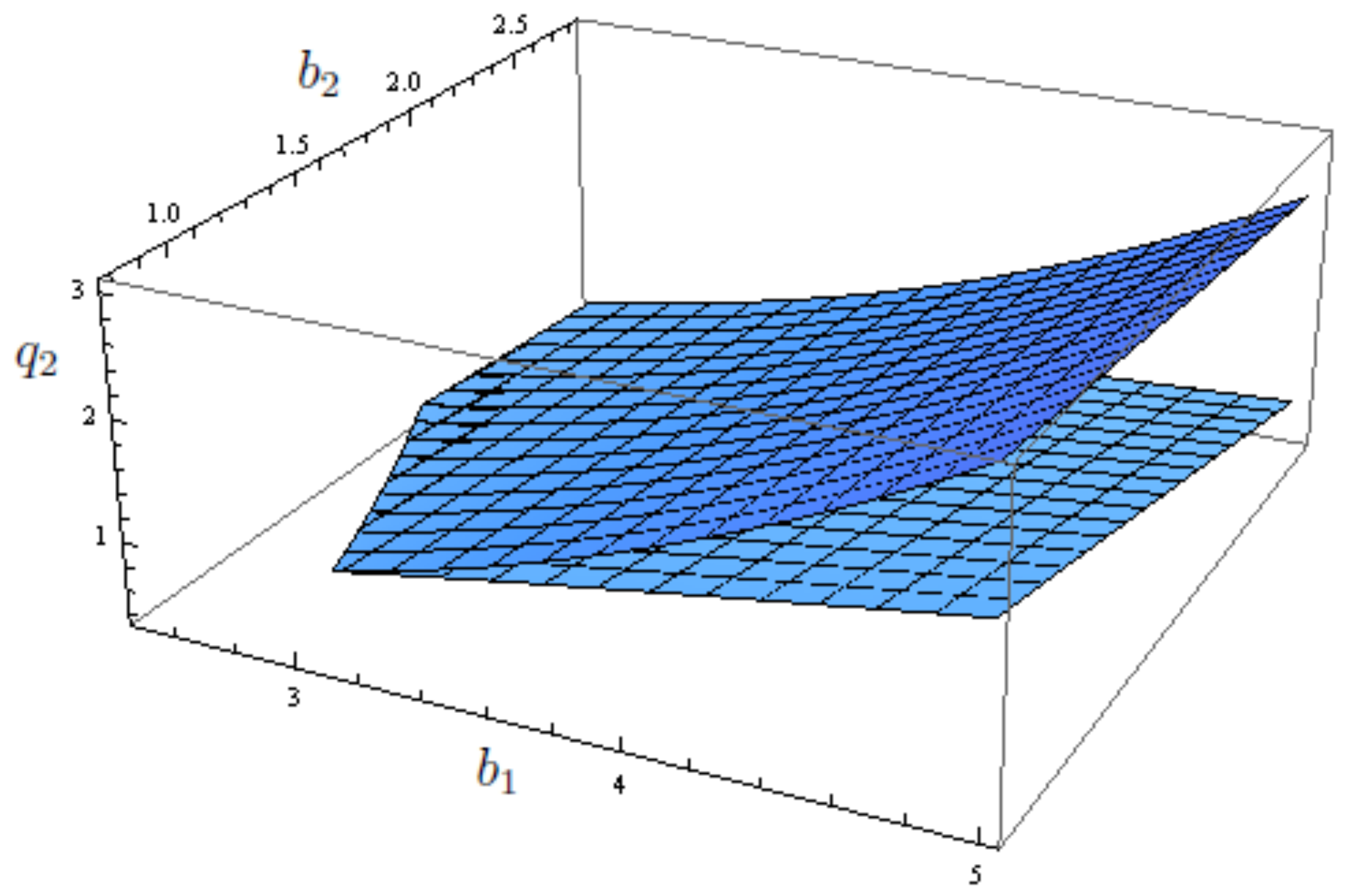
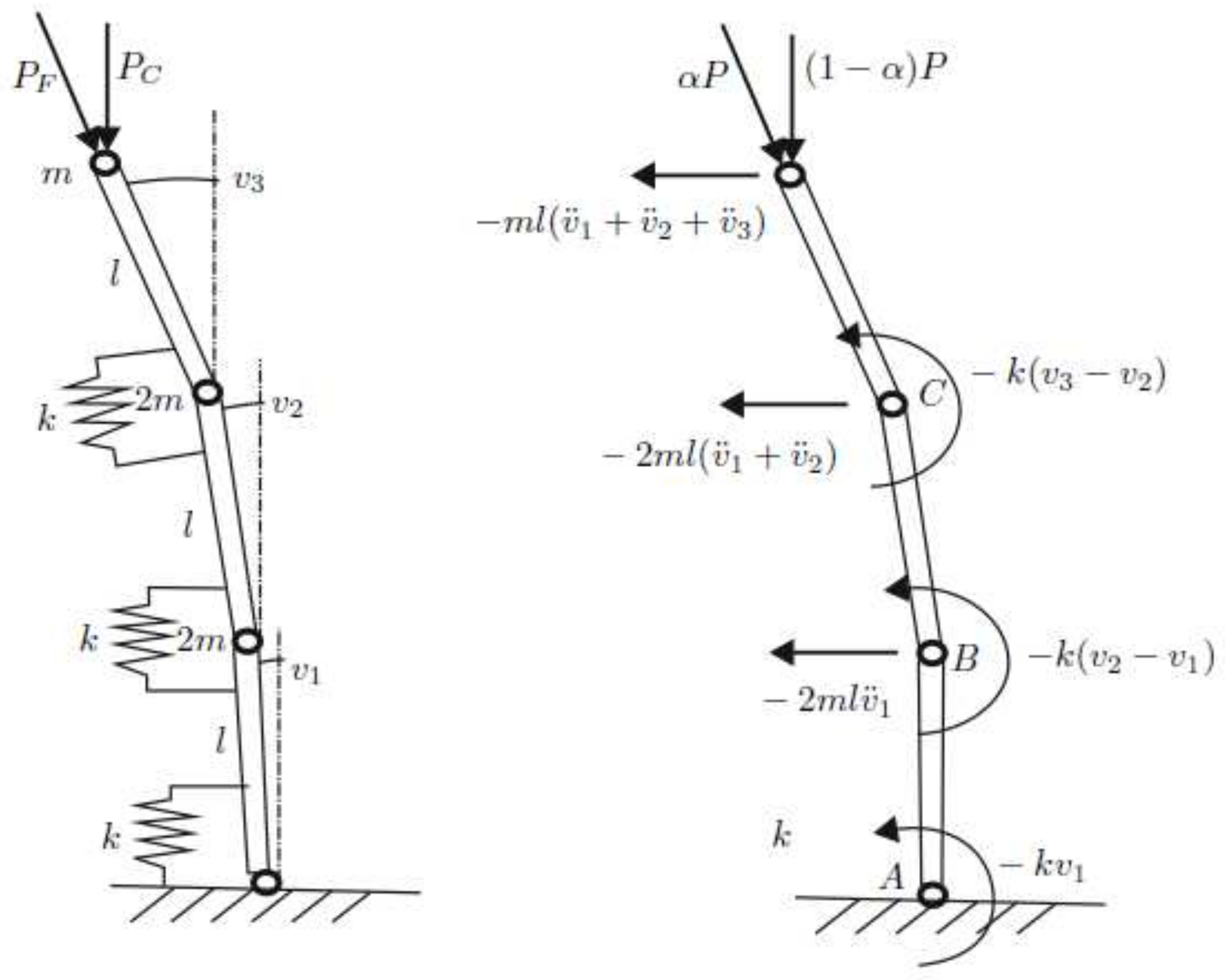
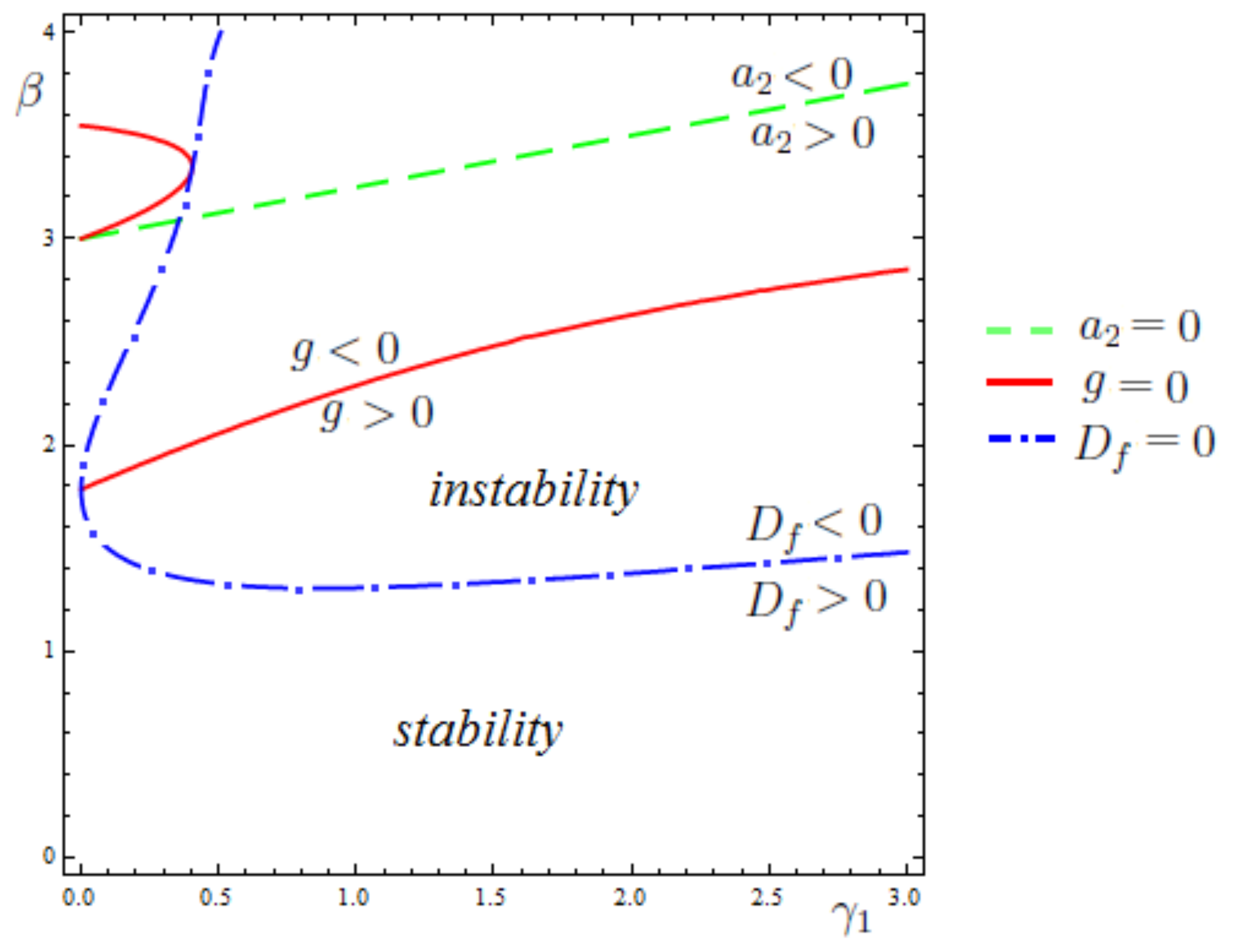

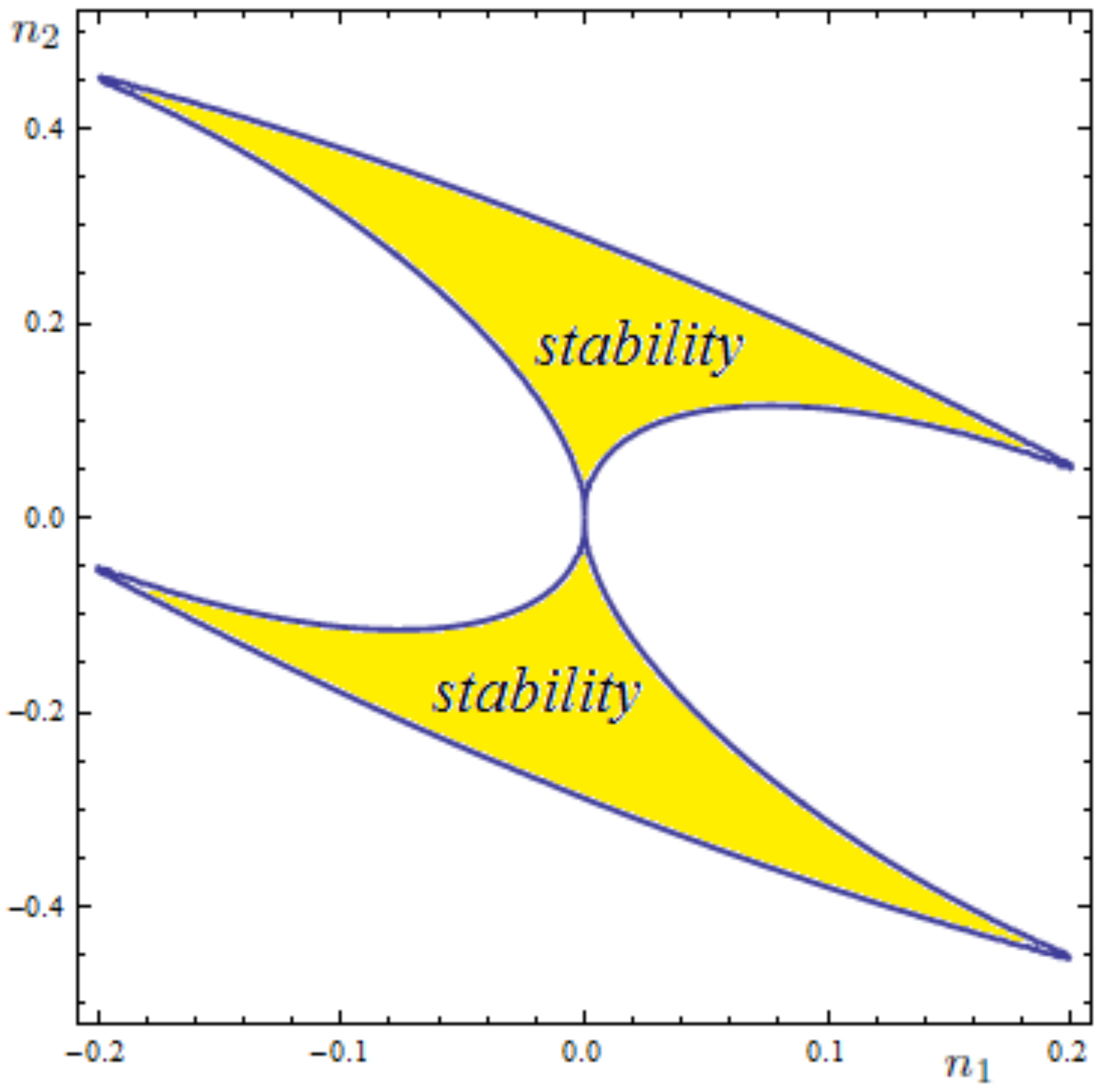


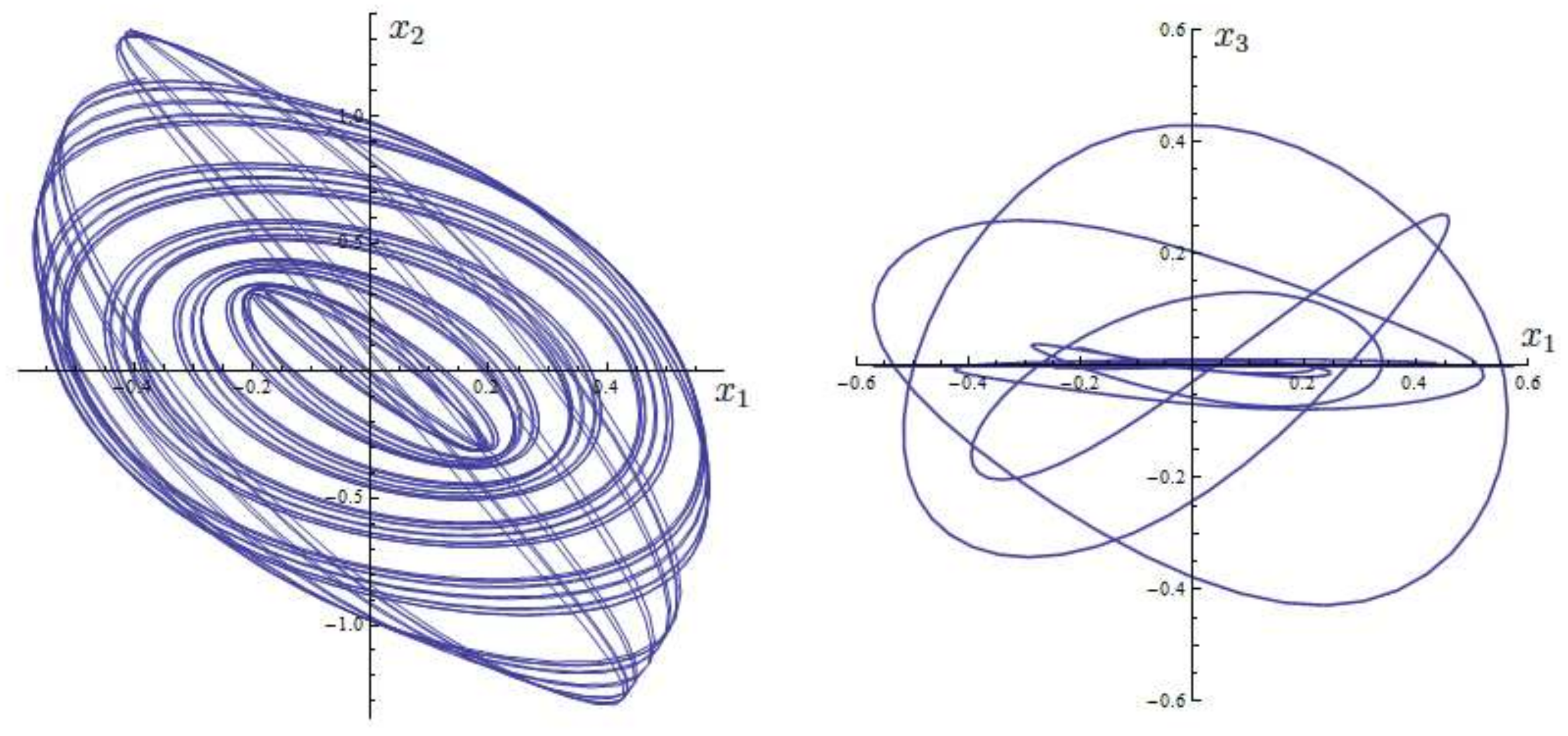

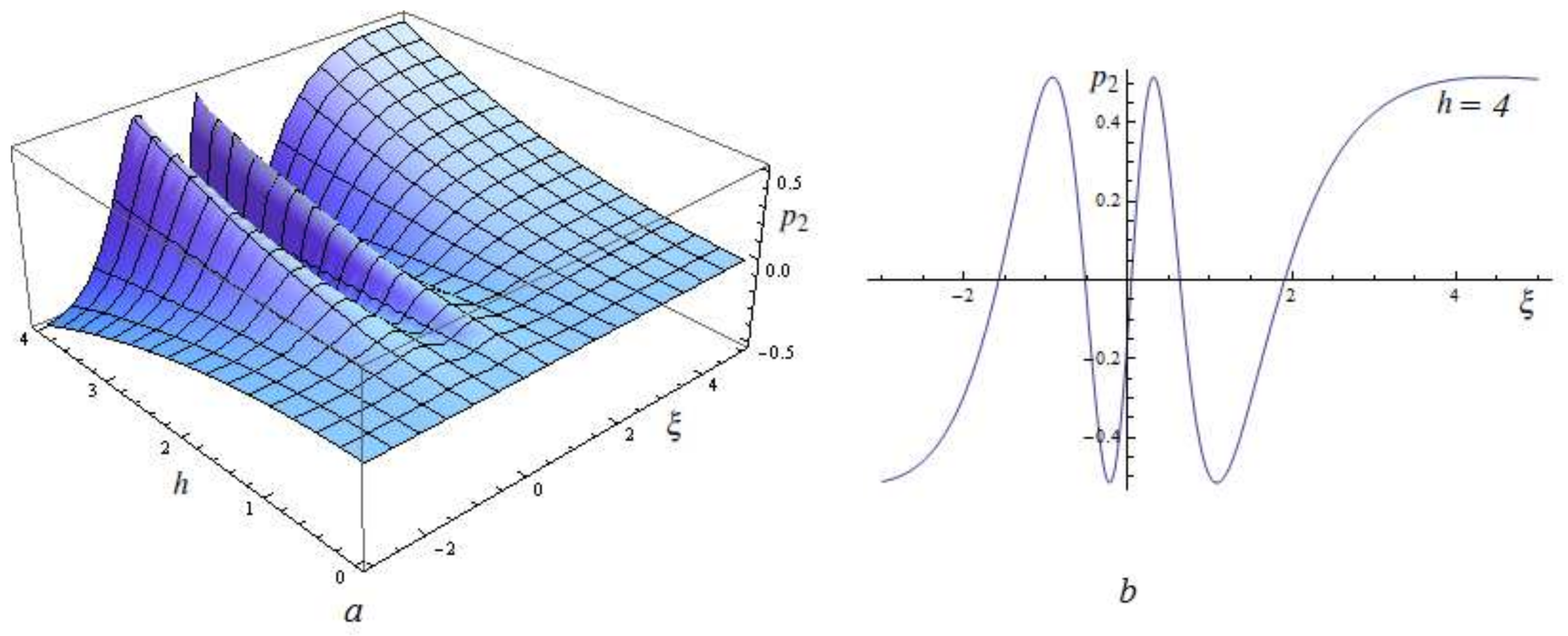
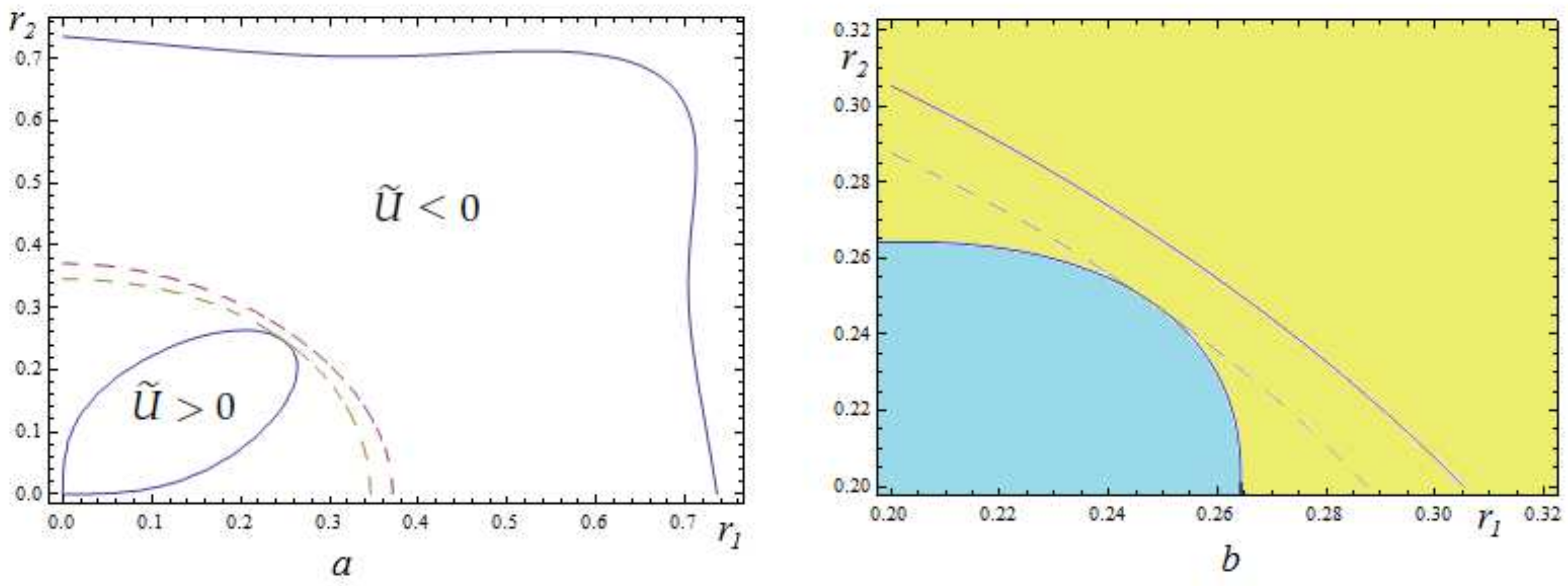
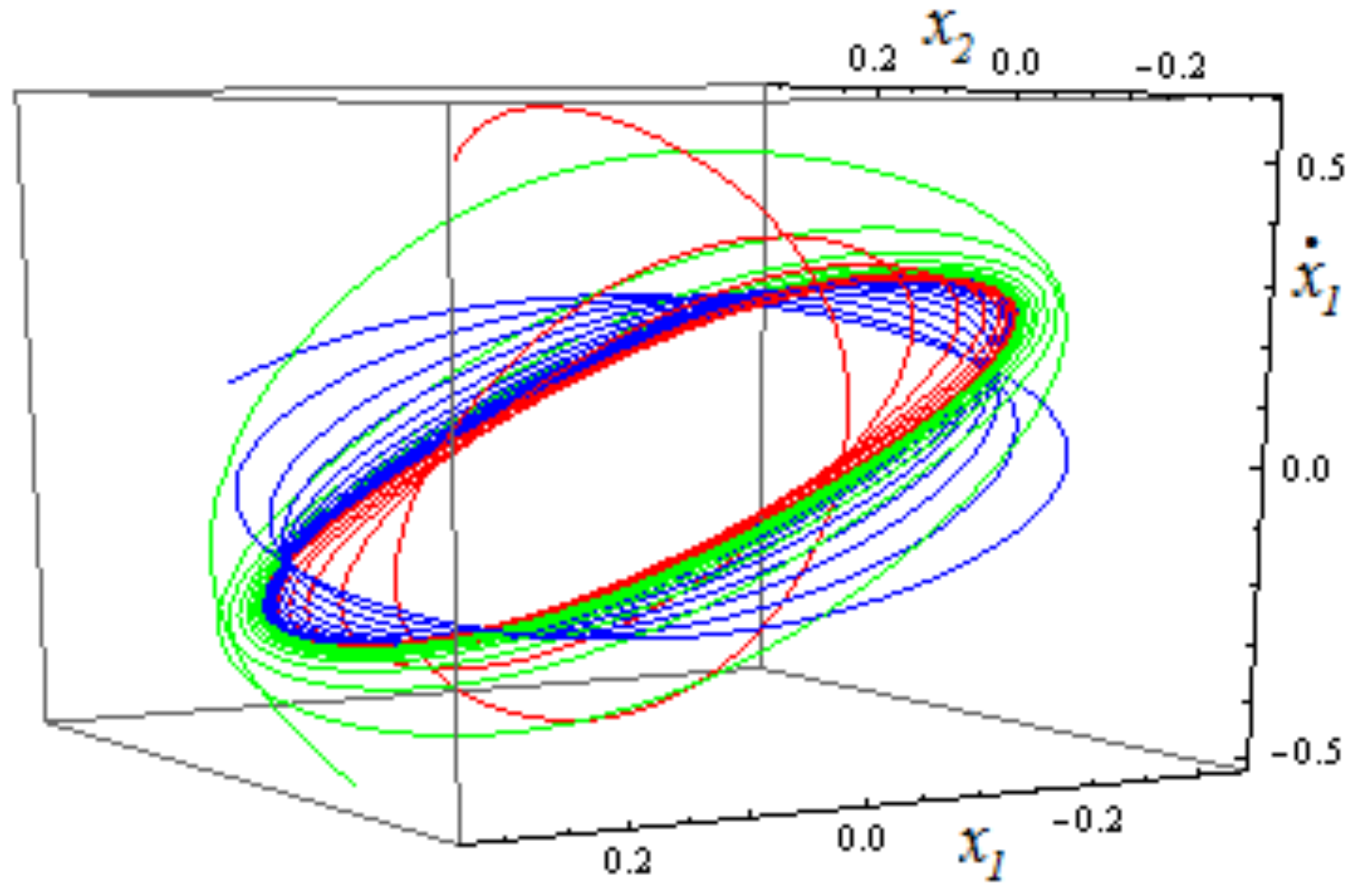
© 2020 by the authors. Licensee MDPI, Basel, Switzerland. This article is an open access article distributed under the terms and conditions of the Creative Commons Attribution (CC BY) license (http://creativecommons.org/licenses/by/4.0/).
Share and Cite
Awrejcewicz, J.; Losyeva, N.; Puzyrov, V. Stability and Boundedness of the Solutions of Multi-Parameter Dynamical Systems with Circulatory Forces. Symmetry 2020, 12, 1210. https://doi.org/10.3390/sym12081210
Awrejcewicz J, Losyeva N, Puzyrov V. Stability and Boundedness of the Solutions of Multi-Parameter Dynamical Systems with Circulatory Forces. Symmetry. 2020; 12(8):1210. https://doi.org/10.3390/sym12081210
Chicago/Turabian StyleAwrejcewicz, Jan, Nataliya Losyeva, and Volodymyr Puzyrov. 2020. "Stability and Boundedness of the Solutions of Multi-Parameter Dynamical Systems with Circulatory Forces" Symmetry 12, no. 8: 1210. https://doi.org/10.3390/sym12081210
APA StyleAwrejcewicz, J., Losyeva, N., & Puzyrov, V. (2020). Stability and Boundedness of the Solutions of Multi-Parameter Dynamical Systems with Circulatory Forces. Symmetry, 12(8), 1210. https://doi.org/10.3390/sym12081210





